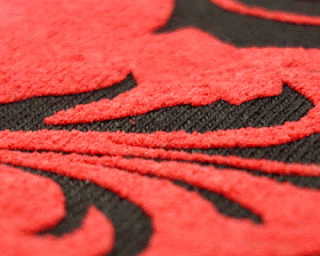How to Coat a Screen with Emulsion
Posted by Mary Yaeger -
9/18/2017
Also seen on Printwear
Coating a screen is also
referred to as “making a stencil”. The process is done with emulsion which is a
thick liquid that is sensitive to UV light. When you place artwork on the photo
sensitive emulsion and expose it, a negative stencil is created. This negative
stencil is what allows the ink to be printed on a garment.
Before we get into coating a
screen we need to discuss the different types of emulsions that are available.
There are three types of emulsion and capillary film – which could be used as
an alternative to coating the screen. All emulsions work with plastisol inks.
Water based inks will eat through most emulsions so you will use an emulsion
formulated to work best for water based printing.
Diazo Emulsion
Diazo emulsions have been
used for many decades and are still preferred when low production cost is a
major consideration. Diazo emulsions are either water resistant or resistant to
UV and solvent-based inks. Plastisol inks may be used with either diazo
emulsion type.
Dual Cure Emulsion
Diazo-Photopolymer
emulsions, also known as dual-cure emulsions, offer the largest variety of features
and applications. Dual cure photo-stencil systems provide remarkable image
quality and exceptionally durable stencils. These are premium emulsions for use
with UV, plastisol, water-based, and solvent-based inks. Whether you need an
emulsion with high chemical resistance or one specifically for ceramic inks,
our selection provides the right emulsion for your requirements.
Pure Photopolymer Emulsion
Photopolymer emulsions are
one-component emulsion systems that are pre-sensitized and ready for use. They
offer very fast exposure speed and can be used universally, but often are
developed for specific applications and exposure equipment such as direct
projection, high emulsion over mesh ratio or for coarse mesh counts.
Photopolymer emulsions are typically resistant to UV, solvent-based and
Plastisol inks.
Capillary Film
Capillary film can replace
liquid emulsion as the technology necessary to meet a wide range of decorator
demands, including textured garments, textured prints, and higher resolution
images at a lower production cost. Capillary film is not messy like liquid
emulsion, does not require mixing ingredients, does not require storage in the
refrigerator, and has a longer shelf life. There is no waste, since you cut off
and use just what you want.
Application
Emulsionscoop coaters are a must-have tool for coating screens with all direct liquid
emulsions. Emulsion scoop coaters are
the perfect way to get a smooth, even emulsion layer on your screen.
Simply pour an appropriate amount of emulsion into the coater reservoir
then position the coater against the screen and move slowly and smoothly from
the bottom to the top, adjusting the angle of the coater slightly as you go to
ensure good coverage.
It is usually best to get an
emulsion scoop coater about 2-3 inches narrower than the inside screen frame
width. You want the coater to be just wide enough to cover the entire emulsion
width in one pass. For heavier ink deposits or to increase the durability of
the screen for longer runs additional coatings may desired after the 1st
application dries. This will provide a thicker more durable stencil.
Now, you are going to start
with a screen that has been degreased and dried without being contaminated with
dust, lint or finger prints. Next, you are going to fill the scoop coater with
emulsion. Place the screen frame in an upright position and secure it in place.
Use two hands to hold the scoop coater.
When coating screens the
emulsion needs to be even on the mesh. Thick and thin places will cause
problems during drying and exposing. The thin places will expose faster and
cause the image to not wash out due to over exposure. The thick places will
expose slower and cause the image to break down and wash out.
There are three types of coating methods:
1&1 Coat – Apply one coat
of emulsion on the print side, rotate the screen 180, and apply on the squeegee
side. Dry in a horizontal position.
2&2 Coat – Coat twice on
the print side, then twice on the squeegee side. After each coat, rotate the
screen 180. Dry the screen print side down. This will require a longer dry
time, longer exposure time and yield a thicker stencil. This coating method is
great for athletic printing.
3&3 Coat – Start by using
method 2 above. After complete drying of the emulsion in method 2, add an
additional coat on the print side and dry again. This method produces the
sharpest edges and thickest stencil and ink deposit.
After coating the screens, let
them sit overnight to dry. Screens need to be dry to the touch before exposing.


























0 comments: